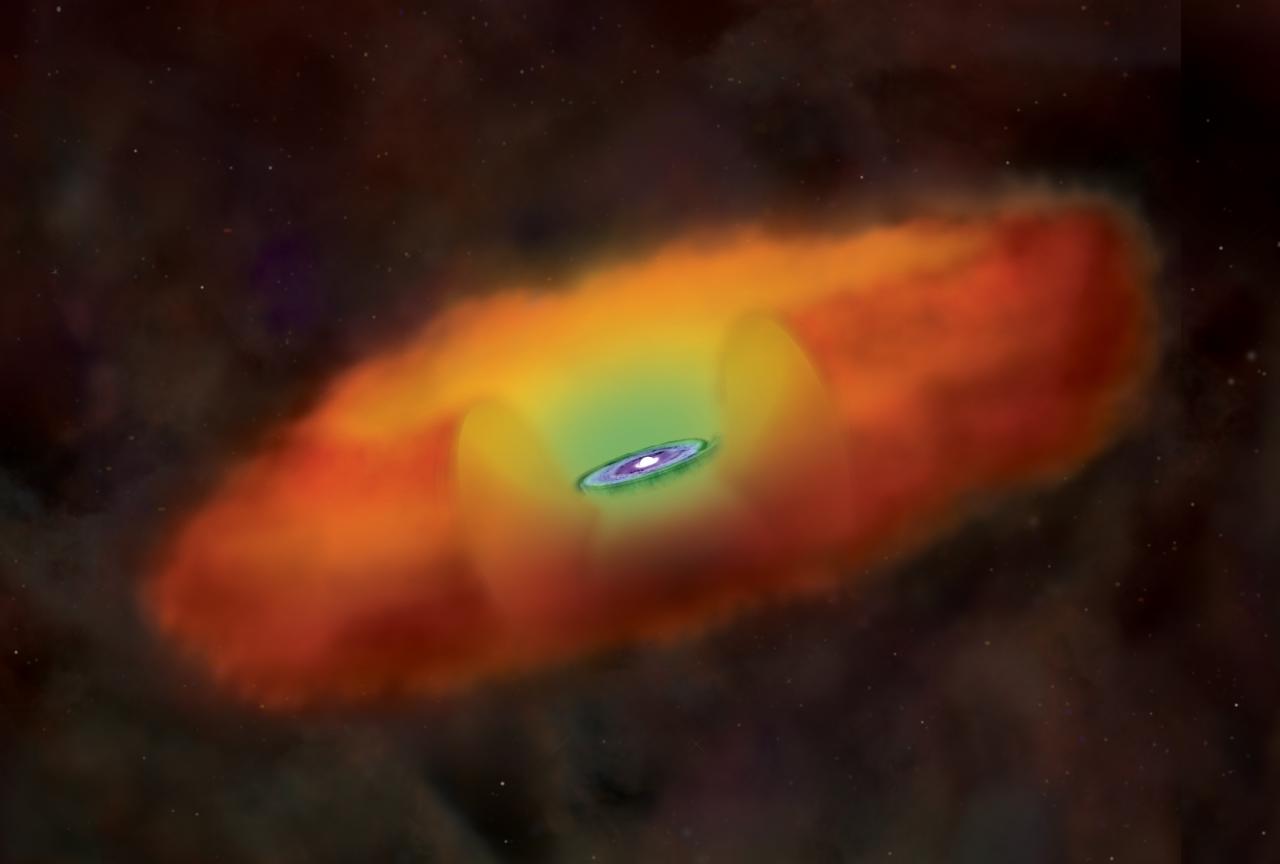Mrk1018: the black hole that returns to the shadows
Mrk1018 is a supermassive black hole located at the center of a distant galaxy that has changed its appearance twice in thirty years
Active galactic nuclei are one of the most energetic objects in the universe, and can emit continuously over a hundred times the energy of all the stars in the Milky Way. They are the manifestation of the existence of a supermassive black hole in the center of the host galaxies and, depending on the type of light emitted, they are classified into different types. Now a group of researchers has solved the case of Mrk1018, an active nucleus whose classification has changed for the second time and, after thirty years glowing, has returned to the shade.
The structure of an active galactic nucleus (or AGN) is a black hole with up to billions of solar masses, surrounded by a disk of gas that feeds it and, in the process of falling, releases large amounts of energy. "The AGNs are surrounded by a donut-shaped structure that affects our view: if we see the AGN face-on we will detect the emission of the falling gas, and we will therefore see a very bright object; but if we see the AGN edge-on dust clouds will hide the central region and we get a weaker signal", says Miguel Angel Perez-Torres, a researcher at the Institute of Astrophysics of Andalusia (IAA-CSCI) participating in the study.
MERCURIAL ACTIVE GALACTIC NUCLEI
Depending on their orientation, active nuclei are classified into different categories (Type 1 if we see them face-on and type 2 if we observe them edge-on). And, although there have been documented some isolated cases where an AGN changes rate over time, Mrk1018 has been a surprise since it changed twice and has been studied in unprecedented detail.
"In the late 70s, the light coming from Mrk1018 corresponded to a type 2 active nucleus, but in 1981-1982 it drastically increased its brightness and changed to type 1. After remaining stable for nearly thirty years, it has now switched again to type 2 and thus completed a full cycle of transformation", explains Perez-Torres (IAA-CSIC).

There are several possibilities to explain this change of appearance, as the effect of a gas cloud weakening the brightness we observe (similar to the effect of the fog on earth), or the destruction of a star that had passed very close to the black hole, which would have generated an increase of brightness and then a decline over the years.
However, very detailed observations of the Hubble Space Telescope (NASA / ESA) have allowed to rule out both options and suggest that the return to the shadows of Mrk1018 is because the regions around the black hole lack of gas to feed it.
Researchers have calculated how much less this black hole "eats". "Since we know the mass of the black hole, which amounts to about a hundred million suns, we were able to calculate the amount of gas that absorbs Mrk1018, which for the last thirty years has been five hundredths of a solar mass per year. Now, however, it has decreased to five thousandths of solar mass per year, "said Perez-Torres (IAA-CSIC).
In addition, this work has shown that the shortage of material in the vicinity of the black hole could be due to an interaction with a second supermassive black hole, a likely possibility because the galaxy is the product of a merger of two smaller galaxies, both with a supermassive black hole at their centers.
The researchers, who have relied on observations of the Very Large Telescope (ESO), Hubble Space Telescope (NASA / ESA) and Chandra (NASA) to get to this conclusions, are already keeping track of Mrk1018 with very long baseline radiotelescopes, which will allow to study in detail the regions near the black hole.
This discovery, made in the context of the CARS sample (Close AGN Reference Survey), will improve our knowledge of active galactic nuclei and of the physics that governs the relationship between black holes and their accretion disks.
B. Huseman et al. "The Close AGN Reference Survey (CARS). What is causing Mrk1018´s return to the shadows after 30 years?". Astronomy & Astrophysics, DOI: http://dx.doi.org/10.1051/0004-6361/201629245
R. E. McElroy et al. "The Close AGN Reference Survey (CARS). Mrk1018´s return to the shadows after 30 years as a Seyfert 1". Astronomy & Astrophysics, DOI: http://dx.doi.org/10.1051/0004-6361/201629102
CARS Survey: http://www.cars-survey.org/
Instituto de Astrofísica de Andalucía (IAA-CSIC)
Unidad de Divulgación y Comunicación
Silbia López de Lacalle - sll[arroba]iaa.es - 958230532
http://www.iaa.es
http://www-divulgacion.iaa.es

